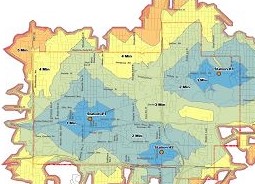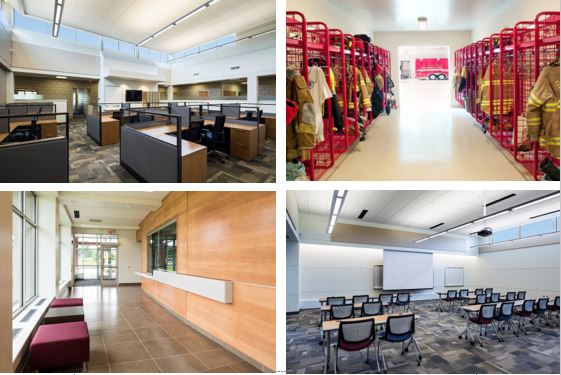PLANNING AND DESIGN
Governmental organizations from City Halls to Libraries, County Government Centers to Jails, and especially Police and Fire Departments are highly organized and process driven organizations. And, while many of these processes are the same between organizations, there are also many processes that are unique to your particular organization.

At AMC Public Safety Consulting, we let your processes inform our design. From our initial programming phase through to the final product we keep work flow and efficiency in the forefront of the design in a process we call Process Driven Design Strategies.
Contact us to find out more about our Processes Driven Design.
FIRE STATION LOCATION STUDIES
One of the primary components of a fire department response plan is the speed in which personnel and equipment can be delivered to the scene. Simple analysis of response times for
a proposed station location to your community is however only a beginning. Our system combines the experience of our staff, with your knowledge of your community and with the
graphic abilities of GIS mapping technology to develop a holistic view of your community’s needs, barriers that may exist to response, national standards and local benchmarks
into a cohesive graphic based presentation supporting your department’s specific and unique needs.

A community-wide Risk and Demand Map provides an additional layer of information to the response time mapping that identifies barriers to mobility within your community and service points that may impact location preferences. This mapping is what tells the specific story or your community and its needs.
Contact us to find out more about the importance of Risk and Demand Mapping
SPACE NEEDS STUDIES
This critical first step will determine the scope of your project and appropriate budget allocations that are the single most important factor in the success of you project. For this phase to be truly successful it must be about more than just a list of spaces and their relative sizes.

Our unique method of determining space needs is based on a method we call Operational Programming. This philosophy provides a frame work for us to have a conversation with you about how your department works and what makes it unique. We then use that information to build a comprehensive list of space needed to bring that operational model to life in your new building.
Current trends are a significant part of this effort. We will bring to you a discussion of the most current advancements in public safety design, such as cancer prevention, stress mitigation strategies, or how providing security in your public spaces can be less intrusive while inspiring confidence in the public and staff. And most importantly we help you evaluate these trends as value based decisions.
Contact us to find out more about our Operational Programming Process.
CAPITAL IMPROVEMENT PLANNING
Building projects are complex undertakings that involve planning for multi-year expenditures often with funding provided from a variety of sources both internal and external. Understanding all aspects of the project proforma is critical to a successful outcome.
Our project budgets are generated from sources both local and national, as well as a variety of industry sources and can be relied upon to remain relevant through the course of the project.
To be complete, Capital Improvement Planning must include the ‘hard’ costs of construction, as well as ‘soft’ costs that include fixtures, equipment, technology, fees and other costs. Essentially we seek to include all known costs in our project budgeting to assist you in your efforts to understand the total cost of your project.
Contact us to find out more about our comprehensive Capital Improvement Planning Process.